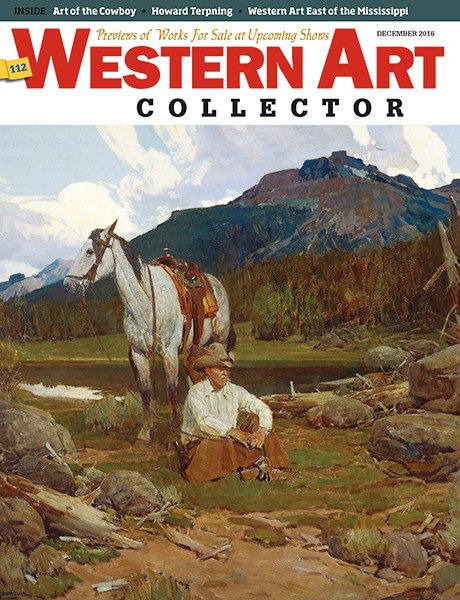In this article, we’ll explore the process of negative painting by means of a little plein-air study of daisies in watercolor. What is negative painting?

Hillside Gardens, watercolor and water-soluble colored pencils, 5 x 8" (12 x 20 cm) Sequence: First I color the mass of leaves by placing a large patch of yellow-green across the whole foliage area. I let it dry and then I paint around the leaf shapes with a dark, semi-opaque tone across the background.
It’s a way of bringing out positive shapes by painting the negative spaces behind them. The focus shifts from the subject itself to the surrounding spaces, creating form by embracing the void. By concentrating on these negative spaces, you can define the foreground shapes quickly. Every watercolorist knows this magic trick, but it also applies to oil, acrylic, pastel, and other opaque media.
 Stage 1
Stage 1Stage 1 Setting Up
At a botanical garden I set up my tripod easel next to a patch of daisies. The plan is to paint around the white of the daisy petals. The watercolor comes from a folding metal pan set with five cool colors in the left column and five warm colors on the right. Before I begin painting, I dab a drop or two of water on each pan of color to activate it and get it to liquefy.
 Stage 2
Stage 2Stage 2 Mapping the Centers
I want to paint each of the flowers in its correct relationship to the others but I don’t want to get distracted by all the details of the structure of each flower. So after lightly drawing in pencil, I place the centers of each daisy in relation to the centers of the other ones. By using those yellow-orange ovals as placeholders, I’ll be able to see where I am in relation to the rest of the scene.
 Stage 3
Stage 3Stage 3 Building Outward
Now that I’ve set up a map to orient myself, I’m ready to start with negative painting. That means defining the white parts of these flowers by painting the green spaces between them. I start by picking one particular shape in the middle of the scene. I paint it in, and build outward from there.
 Stage 4
Stage 4Stage 4 Jagged Shapes
Wherever two of these white petals overlap each other, I’ll just leave them fused together as a larger white shape and let the viewer sort them out. The negative space is a jagged shape with outside edges that fit together with the outside contour of the flower. I quickly realize when I paint from nature it’s impossible to capture all the detail, so I just try to convey the essence.
 Stage 5
Stage 5Stage 5 Slowing Down
I use gouache to increase the chroma of those central discs. I can’t resist using a fountain pen with dark brown ink to separate a few daisy petals (or “ray florets” as they’re called). I tell myself to slow down. It’s a challenge to cultivate the mindset required to see each flower as a unique shape and to resist the temptation to simplify and standardize all the forms.
 Stage 6
Stage 6Stage 6 Touching up with White
If you’re doing a negative painting, is it okay to use white gouache to touch up the areas that were supposed to be white? Of course you can! The challenge will be to make the white paint as white as the paper, which it almost never is. I’m just going to use a little bit of white to fix it where I didn’t quite get it the first time. Next I add the bright yellow centers as dots of wet gouache, which I’ll soften up and smooth over the center of each flower.
 Stage 7
Stage 7Stage 7 Finished Artwork
Daisies, watercolor, 5 x 5" (12 x 12 cm)
As simple as this subject seems to be, I still find myself running up against constraints of time and attention. I can only focus on this for so long without my mind starting to wander, and of course the daisies are moving and changing and wilting quite a lot through the two-hour session.
Negative painting is a lot more positive than it sounds. It simply means giving your attention to the background and thinking about the intervals, the spaces, and the emptiness between things in order to bring the important forms forward.








